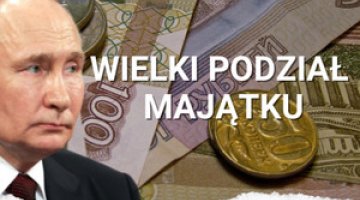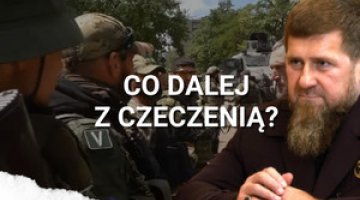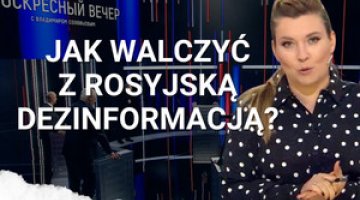Russia: the decision to escalate the war with Ukraine

On 20 September, the authorities of the puppet so-called Donetsk and Luhansk People’s Republics in the Russian-occupied part of the Ukrainian Donbas, as well as the Russian administrations of occupied parts of the Kherson and Zaporizhzhia oblasts, decided to hold ‘referendums’ on the annexation of these territories to Russia. These are to be held from 23–27 September, and will include online voting. Residents who have left or been deported to Russia will also be eligible to vote. Voting stations will be set up on Russian territory for this purpose.
In a speech broadcast on the morning of 21 September, Vladimir Putin announced his support for the referendums and Russia’s acquiescence to the ‘will’ of the inhabitants of the regions. At the same time, the president announced a decision to carry out a partial mobilisation to include reservists of selected specialities (the decree does not, however, include such restrictions), and, according to Defence Minister Sergei Shoigu, is expected to affect 300,000 people. Equalisation of the status of ‘volunteers’ and contract soldiers is also being introduced. Putin also stated that the West is threatening Russia with nuclear weapons and wants to bring about the destruction of the Russian state, and reiterated that it has significant potential in this area and will not hesitate to use any means to defend its sovereignty and territorial integrity.
The Kremlin’s decisions on the annexation ‘referendums’ were condemned by Western leaders. They also declared that they would not recognise their results or geopolitical consequences. The Ukrainian authorities reacted similarly, at the same time declaring that they would intensify military action to liberate the occupied territories.
Commentary
- Both the announcement of the ‘referendums’ – which marks the implementation of the Kremlin’s decision to annex parts of eastern and southern Ukraine – and of partial mobilisation, accompanied by threats that nuclear weapons could be used, represent Russia seriously escalating its war against Ukraine and its confrontation with the West. They are indicative of Putin’s decision to play va banque, hoping to deter Kyiv (and especially the West) from attempting to resolve the conflict in Ukraine’s favour and to lead at the very least to a freeze in the war on Russia’s terms or to achieve Moscow’s political objectives, including – as the maximum goal – the gradual subjugation of Ukraine.
- The decision on the ‘referendums’ has been taken, although in recent days the authorities of the occupied oblasts have repeatedly suggested that they should be postponed (they were previously tentatively scheduled for 4 November or 30 December) due to deteriorating security conditions, including following the successful Ukrainian counter-offensive. Together with the announced partial mobilisation, this means that Moscow has set its sights on seizing more areas as part of a new offensive (currently about 42% of Donetsk Oblast, 1% of Luhansk Oblast, 40% of Zaporizhzhia Oblast and 5% of Kherson Oblast are under the control of Ukrainian forces), at least within the boundaries of the units where the ‘referenda’ were announced.
- It is to be expected that the annexation ‘referendums’ will be completely rigged – both in terms of the turnout and the results. This will be made easier by organising the vote (for ‘refugees’ from Ukraine) on Russian territory and, probably, some remote voting. However, annexation will lead to the paradoxical situation that, from Moscow’s point of view, part of the ‘Russian’ territory will be under the ‘occupation’ of Ukraine, which, on the one hand, will hit the prestige of the Russian Federation, but, on the other hand, will justify the necessity of their rapid ‘liberation’. At the same time, it is unlikely that, if successful, the aggressor’s troops will stop at the administrative borders of the annexed territories.
- Moscow’s political objective is to create faits accomplis that propaganda could present as a victory (however limited) for Russia in a ‘special operation’, while masking recent defeats on the frontline. Annexation, mobilisation and especially the threat of nuclear weapons are intended to deter Kyiv from further attempts to regain occupied territories due to the risk of escalation, which would be made under the pretext of defending an attack on ‘Russian territory’. At the same time, the aim is to deter the West from increasing military support to Ukraine.
- Putin’s vague threats to use nuclear weapons contradict Russian doctrinal provisions, which provide for their use only “in response to the use of nuclear weapons and other types of weapons of mass destruction against it and/or its allies, as well as in the event of aggression against the Russian Federation with the use of conventional weapons, when the very the existence of the state is under threat”. According to the documents, such a situation could include “the impact of the enemy on critical state or military facilities of the Russian Federation, the failure of which will lead to the disruption of the response of nuclear forces”.
- Putin’s declaration contained false accusations that the West is threatening Russia with nuclear weapons and claiming the West wishes to destroy it. This should be seen as part of psychological warfare. This is because Moscow is aware that there is great concern among Western governments and public opinion about the potential escalation of the current conflict to the nuclear level. In practice, Russia’s use of (tactical) nuclear weapons could most likely only come into play in the event of Ukrainian troops entering its internationally recognised territory or Crimea. However, Moscow is aware that this would result in a Western reaction in the form of, for example, a significant increase in the scope of sanctions against Russia and military support for Ukraine, and would be negatively perceived by China (among others).
- The decision to mobilise marks a break with the pretence of implementing a limited ‘special operation’ in Ukraine (despite Moscow’s continued use of the term) and turns it into a full-scale war. For Russia, this has the effect of introducing martial law (without formally declaring it) and shifting the economy to a war footing. On 20 September, Putin held a publicised briefing with representatives of the Defence-Industrial Complex and urged them to increase arms production.
- Mobilisation, combined with the formal annexation of partially occupied Ukrainian territories, means in practice that Russia will be able to legally compel conscripted soldiers and drafted reservists to participate in combat. The expected problems of maintaining discipline are to be limited by increased penalties (up to ten years imprisonment) for desertion or evasion of military service (on 20 September, the State Duma adopted the relevant amendments to the Criminal Code in an expedited procedure). For this reason, and because of the limited nature of the mobilisation, no major difficulties are to be expected in carrying it out (Shoigu’s information suggests that the appointments will be gradual). The mobilisation will be extended to reservists who have performed their basic military service in recent years (approximately 200,000 persons per year), or to older persons who were called up for reserve training at the time (60,000 per year). The total number of reservists trained over the past decade exceeds two million people.
- The Kremlin’s decisions carry political risks for the Putin regime. This is because they mean that the war and its consequences will potentially affect wider sections of society and that Russians will increasingly fear that the confrontation with the West will also escalate. While we should not expect meaningful social protests, which – for the time being – are prevented by the fear of repression, it is highly probable that emigration from Russia will increase, especially by representatives of the so-called middle class, young people (who are potentially threatened by conscription), members of the liberal professions or residents of large cities. At the same time, a further increase in discontent with the Kremlin’s confrontational policy may be expected from members of the political and business elite, as well as possible individual resignations of some members of the state administration. In the longer term – depending on the situation on the Ukrainian front and the course of the confrontation with the West – this discontent may contribute to the weakening of the Putin regime and the intensification of competition within its ranks for access to dwindling resources and for influence over the course of domestic and foreign policy.
- The escalation of military action will result in a significant increase in the economic burden of war expenditure and production and the serious and growing consequences of Western sanctions, which will undoubtedly be increased after the annexation of the occupied Ukrainian territories. It will also be negatively affected by the increase in the outflow of skilled personnel associated with increased emigration.
- It is to be expected that – contrary to the Kremlin’s calculations – Putin’s decisions will lead to an increase in Ukrainian attacks, including acts of subversion, in the annexed territories, and will force the West to further significantly tighten restrictions against Russia and – both quantitatively and qualitatively – increase support for Ukraine, including military support. At the same time, Russia will become more isolated internationally, as some of its important partners (such as Turkey and India), who are not interested in a further escalation of military action, may gradually withdraw from cooperation with Russia.





